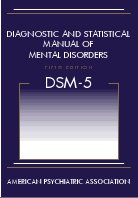DSM-V: The Good, The Bad, and The Possibilities

You would think that in its fifth edition, the Diagnostic and Statistical Manual (DSM) of Mental Disorders would be more geared towards children and adolescents. Sorry to say, this is not the case. Coming out in May, the newly revised manual still contains descriptions of mental illness diagnoses that do not accurately capture the subtle nuance of childhood disorders. We all know that kids go through several stages growing up and that their psychological issues change accordingly; so, they cannot be compared to adults who have already reached maturity−both physically and mentally.
What’s good…
Since it is our only book of standard, approved diagnoses, it is somewhat useful as a common language. We all understand what it means when we talk about Bipolar Disorder, for example. It’s also good that we now have almost three times as many descriptive diagnoses as we did in 1952, when the DSM was first published. Furthermore, certain existing diagnoses have been broadened over the years (and in this next issue) to be more inclusive of children who were previously undiagnosed. Many of us know children who previously fell through the cracks due to milder symptoms and are now gaining access to treatment; particularly in the area of Autistic Spectrum Disorder.
Some new diagnoses added to the DSM V are: Binge-Eating Disorder, Excoriation (Skin-Picking) Disorder, Disruptive Mood Regulation Disorder, and Hoarding Disorder. Diagnoses that have been modified or broadened include: Autism Spectrum Disorders, Bereavement, Post Traumatic Stress Disorder (PTSD), Specific Learning Disorder, and Substance Use Disorder. And those emerging diagnoses determined to require further study are: Internet Use Gaming Disorder, Attenuated Psychosis Syndrome, Non-Suicidal Self Injury, and Suicidal Behavior Disorder.
This shows that more research is being done and more attention is being given to the field of psychiatry. It can only lead to new treatment methods and better patient care for everyone!
What’s bad…
There is a temptation to latch onto these diagnostic labels, as if they are the “truth,” the answer in and of itself to our children’s problems. There may even be some relief in knowing what’s wrong. But, the name of the diagnosis should only be a backdrop to what’s actually happening your child’s life – at home, in school, and in the playground. Each child is unique and presents with different variations of the same disease, and as stated above, this can change from one developmental stage to another. Therefore, it’s dangerous to get attached to the label and think of a child as being their diagnosis. It’s much more important to consider the whole person, who just happens to have such and such disease.
Another danger with so many diagnoses is that approved medication does not exist for every flavor of mental illness. This can too often lead psychiatrists to prescribe medicine without FDA approval. (On the brighter side, the new diagnosis of Disruptive Mood Regulation Disorder may help reduce the mislabeling of children with Bipolar disorder.) In the search for a perfect drug, polypharmacy (three medications or more) is creeping into the treatment of children. In such cases, medicines are just being added to suppress unwanted behaviors rather than looking at the root of the problem.
What’s possible…
We don’t have to be limited by the strict interpretation of DSM diagnoses. There are many things that contribute to a child’s illness and that interplay with his/her current symptoms. The Tarnow Center for Self-Management staff takes the time to perform a thorough intake evaluation to fully assess things like genetics, developmental history, school environment, home environment, and current stressors. If necessary, psychological testing, educational testing, and/or quantitative electroencephalogram (QEEG) may also be done to gather more in-depth information.
A “biopsychosocial” model is one of many methods used by the Tarnow Center to better understand your child’s developmental stage at a given moment in time. Our main goal is for your child to be successful in not only treatment, but in everyday life. Regardless of new and different diagnostic classifications, we will continue to treat the child, not the diagnosis!